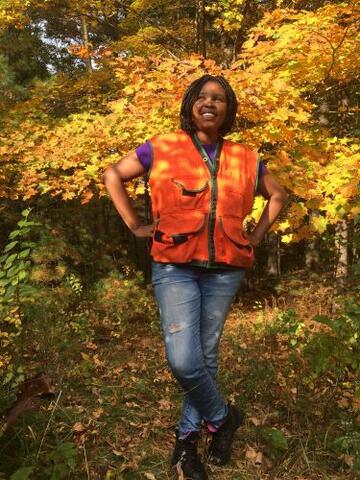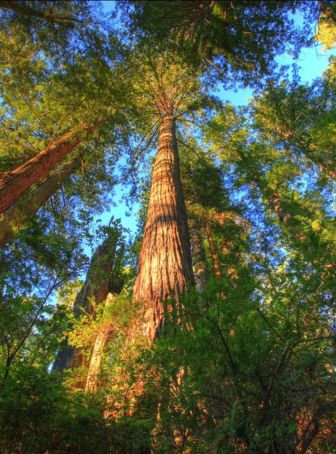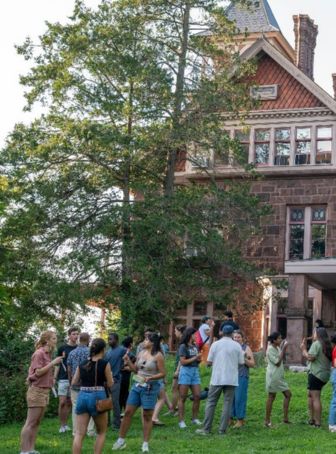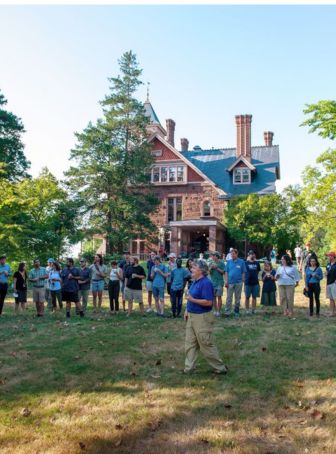
By Adam Houston ’18 YC, ’21 MEM, Quiet Corner Initiative and Research Forest Fellow
This fall, twelve Yale School of the Environment students spent their weekends measuring trees, digging soil pits, and wading in wetlands around northeastern Connecticut. Each student team worked with a forestland owner whose property neighbors Yale-Myers Forest to develop a detailed biophysical survey, social assessment, and management plan for the longstanding “Management Plans for Protected Areas” course taught by Professor Mark Ashton. These plans, which often range from 100 to 200 pages, are developed over three months and require all the skills that students learn during their time at The Forest School at the Yale School of the Environment.
“It has been a heavy lift, but an enjoyable one,” says Genevieve Tarino ’22 MF. “This has been the culmination of everything I have learned here at Yale so far.” Tarino worked with Hannah Andrew ’22 MF to create a plan for a 40-acre property in Eastford, CT. The owners were interested in creating a meadow for pollinators, promoting wildlife habitat, and establishing long-term conservation of the property. After completing an in-depth survey of the property’s geology, soils, and vegetation, Andrew and Tarino recommended changing mowing strategies in the property’s meadows, protecting riparian areas, and exploring several different long-term conservation strategies.
Andrew, who also has a degree from the Vermont Law School, hopes to combine her experience in “dirt forestry” with her knowledge of law to offer all-in-one consulting services to landowners interested in conserving their forestlands. “This experience was perfect for me, because it allowed me to try out forestry consulting with the guidance of one of the experts in New England forests,” Andrew says.

Professor Mark Ashton teaches students how to identify some of the 150 plants required for Management Plans outside of Marsh Hall. Photo courtesy of Brad Ward ’22 MF.
Mark Ashton, the Morris K. Jesup professor of silviculture and forest ecology, has been teaching Management Plans since 1993. The course has been around in some form since the 1960s, when Thomas Siccama, who previously held the professorship of forest ecology at the School, began connecting forestry students to landowners and land trusts across New England. However, since 2011, Management Plans has been focused on working with forest landowners in the three watersheds surrounding Yale-Myers Forest. This area is part of the Quiet Corner, a uniquely undeveloped region that is the last vestige of rural land in the Boston to Washington, D.C. urban corridor. Over the past ten years, Yale students have completed 58 plans covering 4,593 acres of the Quiet Corner.
Past plans have been written for private land, public parks, and land trusts. Students in this cohort worked with private landowners interested in a variety of goals including food production, water quality protection, and wildlife habitat enhancement. Ashton spent the first half of the course training students in the “science of place,” including soils, geology, and more than 150 plant species. Understanding these biophysical characteristics allows students to map the human imprint on their client’s land in the past, such as logging, farming, and grazing by “reading the landscape.” Each team combined that knowledge with historical photos, maps, and in-depth deed surveys to look back at the history of the land, in order to make recommendations moving forward.
The student teams then spent nearly every weekend sampling their client’s property, incorporating their landowner’s values and their own skills into the process. Bryce Powell ’22 MEM and Kyle Lemle ’22 MF were paired with a client whose property has an incredible diversity of plant and animal life. The client was interested in wildlife habitat, and Powell used his past experiences as a park ranger to develop a comprehensive list of wildlife that he and Lemle observed while in the field. This included beavers, great horned owls, long-tailed weasels, and more.

Brad Ward ’22 MF counts seedlings at a survey plot. A complete vegetation analysis is a key part of each management plan. Photo courtesy of Walker Cammack ’22 MF.
Eudora Miao ‘22 MF incorporated new skills from Professor of Meteorology Xuhui Lee’s course on drones into her management plan. Miao and her partner Sawyer Cresap ‘22 MEM borrowed a drone and photographed several of their classmate’s properties from the sky, providing clients with incredible aerial imagery and practicing a valuable skill for foresters. Miao and Cresap’s property fronted the Still River Marsh, so in addition to flying high above the landscape, they also waded into it. After some chilly days in waders, Cresap and Miao had a complete vegetation survey of the marsh boundary.
Although most of the students in Management Plans are in the Master of Forestry program, Cresap enrolled to bring more field skills to her Master of Environmental Management curriculum. In her previous career working in land trust stewardship, Cresap had spent time updating management plans for nature preserves, “but I was always curious about the fieldwork required to create the soil maps and plant lists. Now I understand how different plants are linked to the soils, land use history, and geologic history, and I’m able to ask deeper questions about the land.” In the future, Cresap is “hoping to go back to working with land trusts, thinking about what properties should be conserved and using what tools, and thinking long-term about how stewardship decisions are made.”

Walker Cammack ’22 MF (left) and Brad Ward ’22 MF pour over land records in the Ashford Town Clerk’s office to reconstruct the history of their client’s property over the past two hundred years. Photo courtesy of Brad Ward.
For Walker Cammack ’22 MF, all the hard work was worth it because the course was more than just an educational experience for himself. “It felt great to work on a project that really mattered to our client,” says Cammack, who wrote a management plan along with Brad Ward ‘22 MF that will be used to secure a conservation easement for their client’s property.
The Management Plans course culminated with a marathon session where each team gave an hourlong presentation to their landowners. The session also gave the clients a chance to convene with the other landowners, many of whom are their neighbors. This kind of cross-pollination has led to collaborations between Quiet Corner landowners in the past, such as stream protection plans that span multiple properties.
“After today, I feel like real forester,” concludes Miao after the presentations were over – a sentiment that was shared by everyone in this year’s class, and for every Management Plans student in the past.







